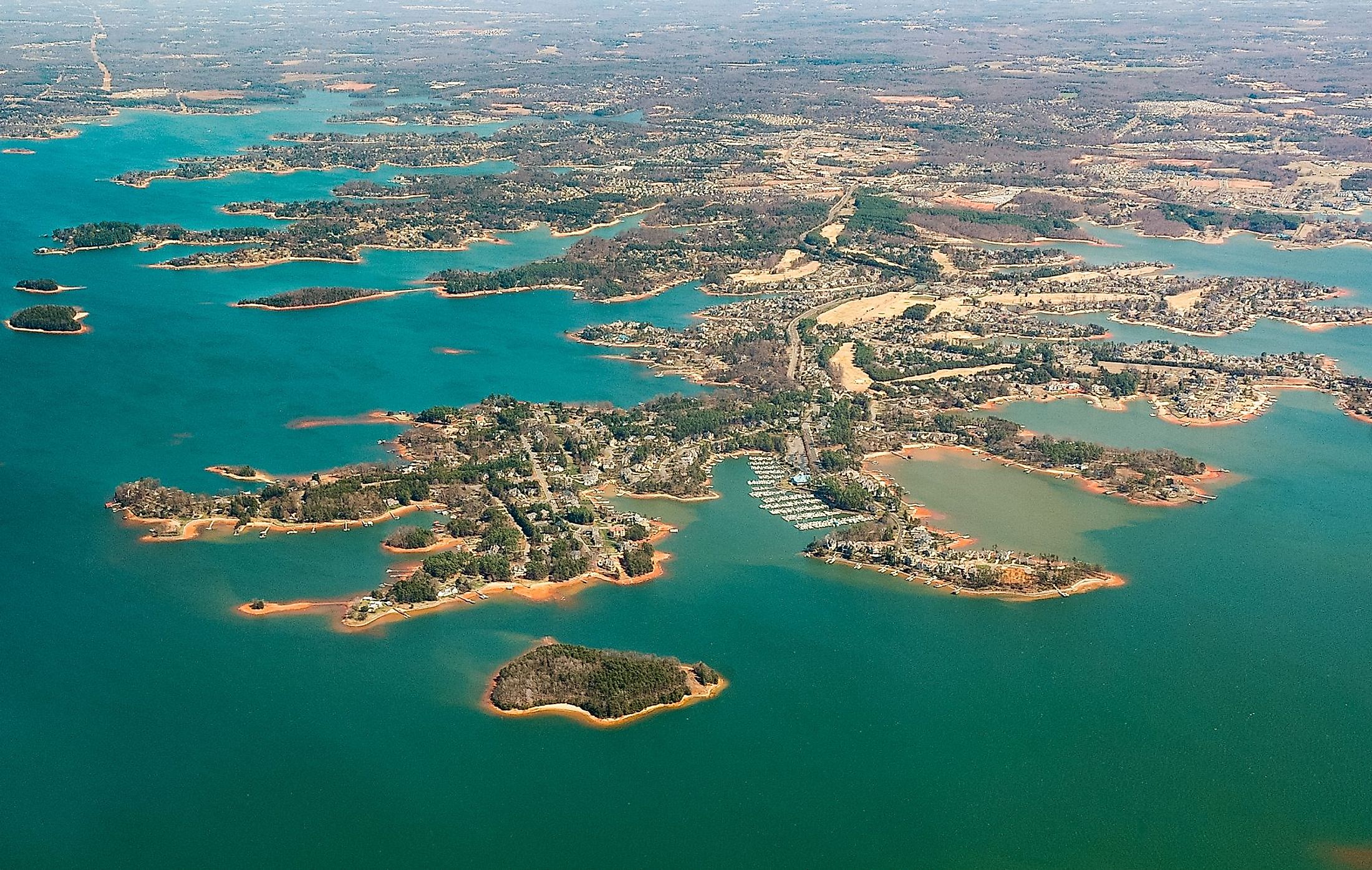
Lake Norman, North Carolina
Often referred to as the “Inland Sea” of North Carolina, Lake Norman is the biggest artificial reservoir that was created between 1959 and 1964 due to the construction of the Cowans Ford Dam. The main reasons for the creation of this lake were to facilitate flood control, provide fresh water for the locals, and provide hydroelectricity to the Piedmont region of both North and South Carolina. The lake is well-known for offering several recreational activities like boating, fishing, jet skiing, swimming, and basking in the summer sun. The most interesting fact about this artificial lake is that the lake bed still contains the old remains of entire towns and villages, houses, churches, and other such structures that were never removed.
Geography And Climate Of Lake Norman
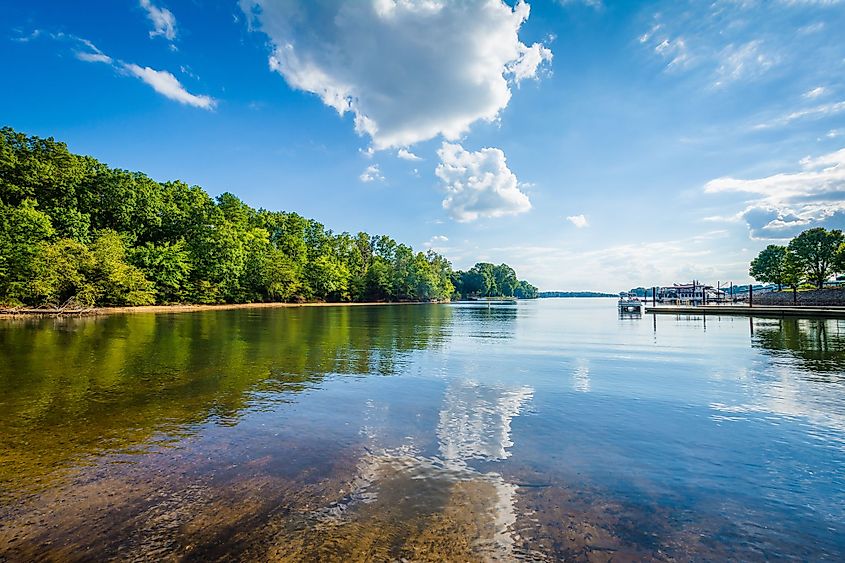
Lake Norman covers a surface area of 132 sq. km and has a length of 54.1 km and a maximum width of 14 km. The lake has an average depth of 10.2 m and reaches a maximum depth of 34 m. Placed at an elevation of 230 m above sea level, Lake Norman has a shore length of 840 km and holds a water volume of 1,348, 900,000 cubic meters. Lake Norman receives freshwaters from the Catawba River impounded by the Cowans Ford Dam and empties into the Mountain Island Lake in the south.
According to Koppen Climate Classification, Lake Norman experiences a humid subtropical climate. Over the whole year, average temperatures at Lake Norman range between 32°F to 88°F, rarely exceeding 95°F or dropping below 20°F. July is the warmest month, having an average temperature of 90°F, while January is the year's coolest month, with an average temperature of 51°F. The lake also receives rainfall all year, which varies from month to month, with August having the most amount of rainfall. The snowy period lasts for 3.2 months, from December to March, with peak snowfall in January.
Geology Of Lake Norman
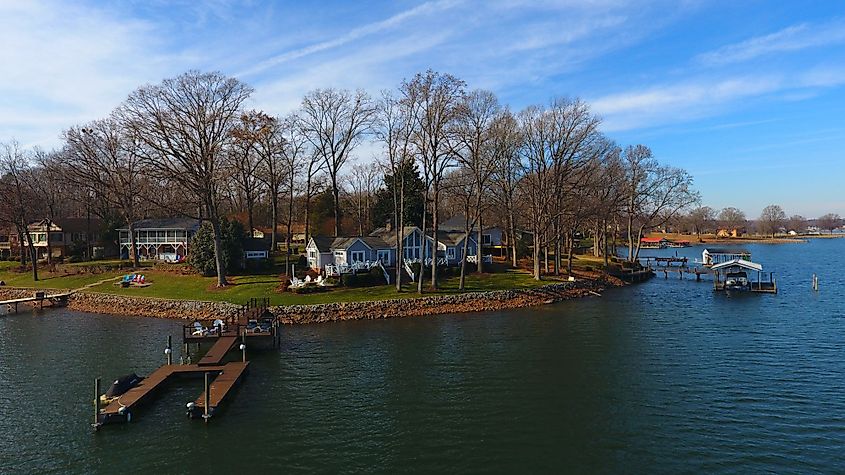
The lake surmounts two geologic belts: the Inner Piedmont belt and the Charlotte belt. The Inner Piedmont belt has misshaped metamorphosed volcanic and sedimentary rocks about 500 to 700 million years old and is the most metamorphosed belt. The Charlotte belt, on the other hand, has igneous rocks about 300 to 500 million years old.
The metamorphic and igneous bedrock at the bottom of the lake supports plastic and clay soils. The clay soil, when wet, becomes sticky and hence holds a high percentage of particles together. Artificial enforcement is used to maintain and construct these mechanically engineered soils in order to solidify them, preventing them from deteriorating and wearing off.
History Of Lake Norman
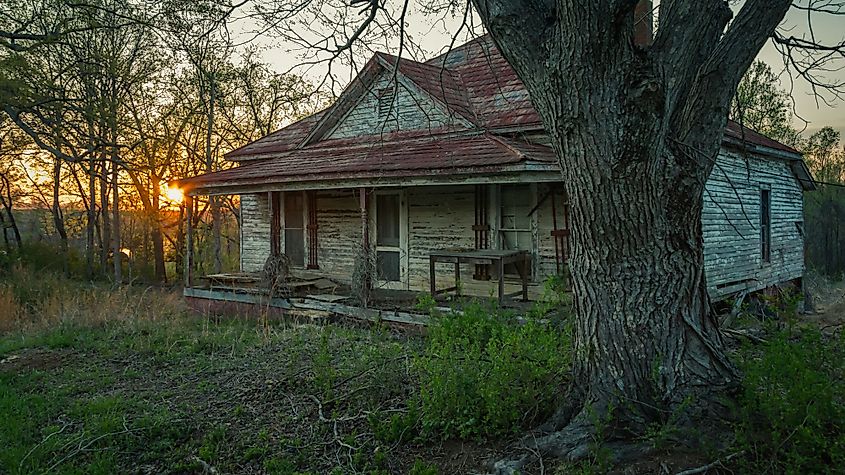
Before the construction of the Cowans Ford Dam led to the creation of Lake Norman, the Catawba River and its surrounding area was inhabited by the indigenous Catawba people. The Catawba Power Company was established in 1900 and was later purchased by the Duke brothers after the first power station was built in 1904. The artificial lake, Lake Norman, was created between 1959 and 1964 by the Duke Energy Company.
The company's original founder Buck Duke was the pioneer behind creating the lake. Even to this date, the company looks after 520-plus miles of shoreline. While building the lake, the taller apartments were broken down due to the likely threat to the boats cruising the lake, locals were requested to relocate, and whole cemeteries, as well as independent graves, were relocated. Most of the land was left untouched, and regular buildings were kept as they were.
Except for a few items moved or destroyed, everything else remained as water flooded the town. Former Duke Power President Norman Cocke was the inspiration for the name of the lake. The Hydroelectric Station owned by Duke Power Cooperation that is today called Duke Energy or Duke Energy Cooperation supplies electricity to both North and South Carolina's Piedmont region with water supply facilitated to Catawba County, Lincoln County, Iredell County, Charlotte County, and other towns, especially Cornelius, Davidson, and Huntersville in Mecklenburg County.
Islands In Lake Norman
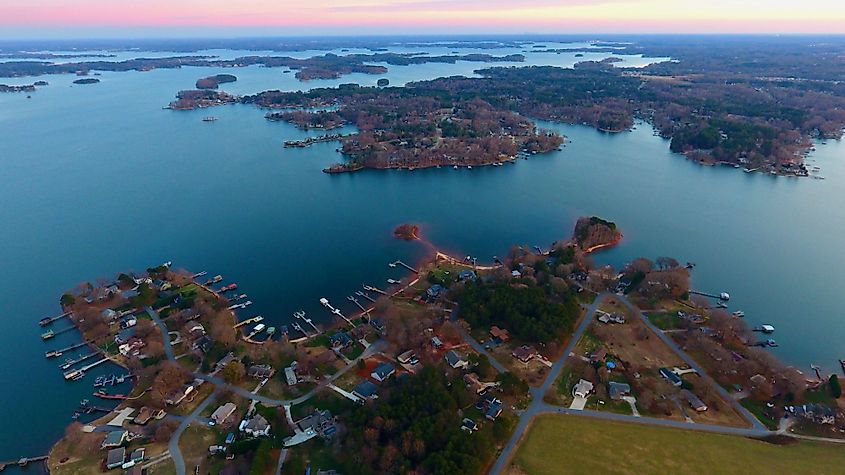
When the lake was built around 1963, it had 96 islands, these areas that remained above water served as new beginnings for the North Carolina Wildlife Federation. According to a 2009 survey, 60 islands have been shown to have substantial wildlife habitats with a variety of species, including birds, squirrels, snakes, deer, fish, and turtles. Encompassing nearly 30 miles and 300 acres of shoreline, a few of the islands cover more than 20 acres, while the others are merely rock heaps. As per the Norman Wildlife Conservationists, Duke Energy has rights over most of the islands, and all these islands are available for the public to explore.
Ecology Of Lake Norman
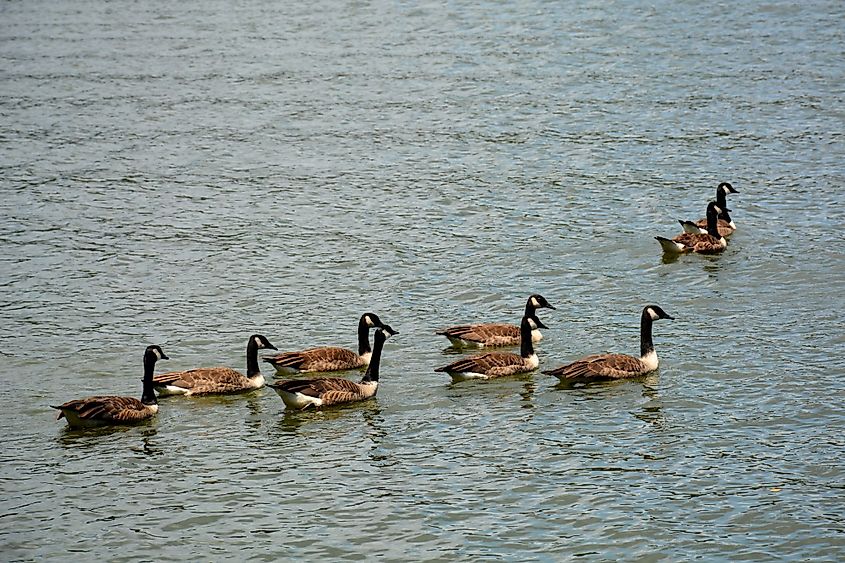
Nature and wildlife around the lake render it fascinating to watch, with similar local trees and flowering plants that inhabit other parts of North Carolina. Some common tree species include those belonging to the genus Silverling as well as yellow poplar (tulip poplar), which is common in marshes and moist soil regions. Other trees like the hornbeam (ironwood), a type of beech tree known for its hard, heavy wood, and trees of genus Sassafras known for their aromatic properties, are also found in and around the lake region. A few examples of the flowering plants that flourish here are the Indian mallow, the buttercup-like flowering plant called the baneberry, and the white snakeroot plants.
The lake is also known to support many animals, and officials continuously warn locals to be cautious around the animals, especially black bears that commonly roam the area with a particular attraction to food. Raccoons, muskrats, foxes, shrews, deer, flying squirrels, woodcock, waterfowls, ducks, red-tailed hawks, and songbirds, in addition to many other birds like the great blue herons and wild turkeys are spotted around in and around the region. Herons-bill (stork's-bill) found around the lake serve as food for some other small mammals.
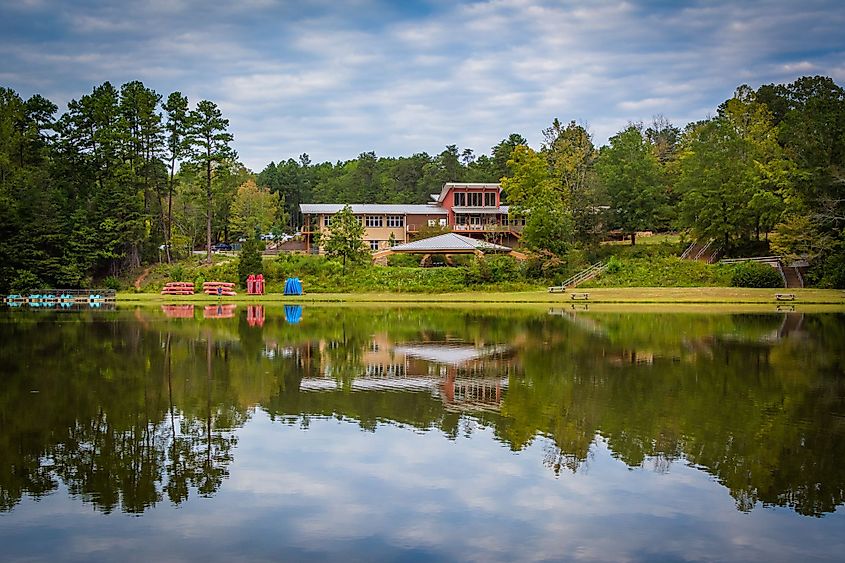
Lake Norman State Park (Duke Power State Park) is the best place to appreciate nature and wildlife. With a mix of pine and hardwood forests, and other prevalent species like sweet gum, red maple, hickories, dogwood, and oaks, there is a variety of foliage to see. With an abundance and diversity of amphibians and reptiles, the creeks and perimeter of the lake are home to frogs, turtles, and water snakes. Although it may be hard to catch a glimpse of the animals at the park, there are at least 35 species of mammals around the park.
Recreational Activities In Lake Norman
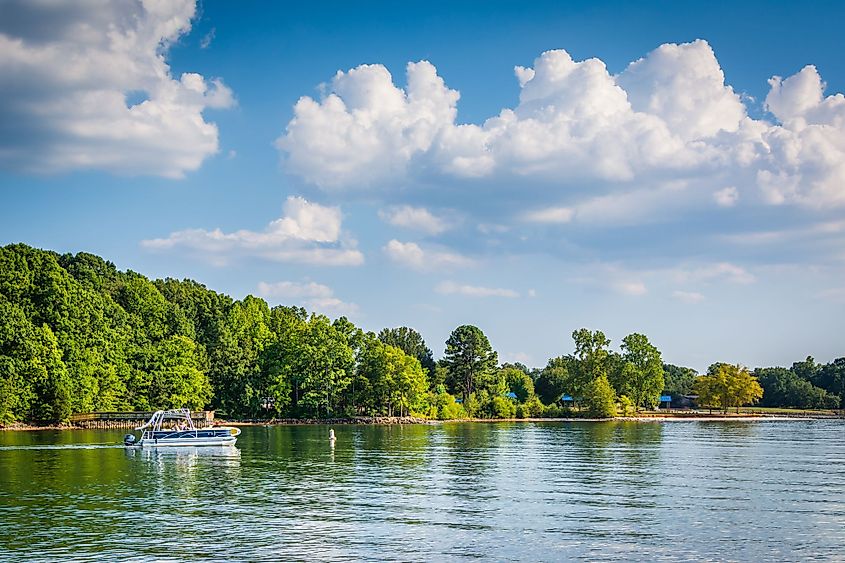
If you ever plan to visit, the best time to visit Lake Norman is during the warm weather season typically ranging from mid-May-June to mid-August-October for some summer activities. From Lake Norman State Park, Stumpy Creek Park, and Jetton Park, to Farmer Markets and lots of outdoor escapades, there is so much to do while at Lake Norman. One very fun thing that tourists enjoy while at Lake Norman is going scuba diving to the bottom of the lake bed and admiring the old structures that still poignantly stand there from the time the lake was constructed, serving as a beautiful historical reminder of the sacrifices of their ancestors. Drive around the lake or choose to go hiking, biking, paddle boarding, fishing, or walking around to enjoy the iconic streets, any of these activities will leave you with great memories and experiences to cherish for a lifetime.
Apart from its interesting history, and recovery of precious indigenous Native American weapons like flint chips, arrowheads, and pottery shards from the areas surrounding the lake, it is also famous for being a filming site for several movies and TV shows. Besides the UFO sightings and ghost stories, another popular fascination is “Normie” whom the locals identify as being similar to the Loch Ness Monster. As the perfect getaway to explore spectacular sceneries and appreciate the place for its noteworthy history, in the past, celebrities like Michael Jordan, and Denny Hamlin, have enjoyed the charisma of Lake Norman, a place that leaves everyone really in awe of its charm.











